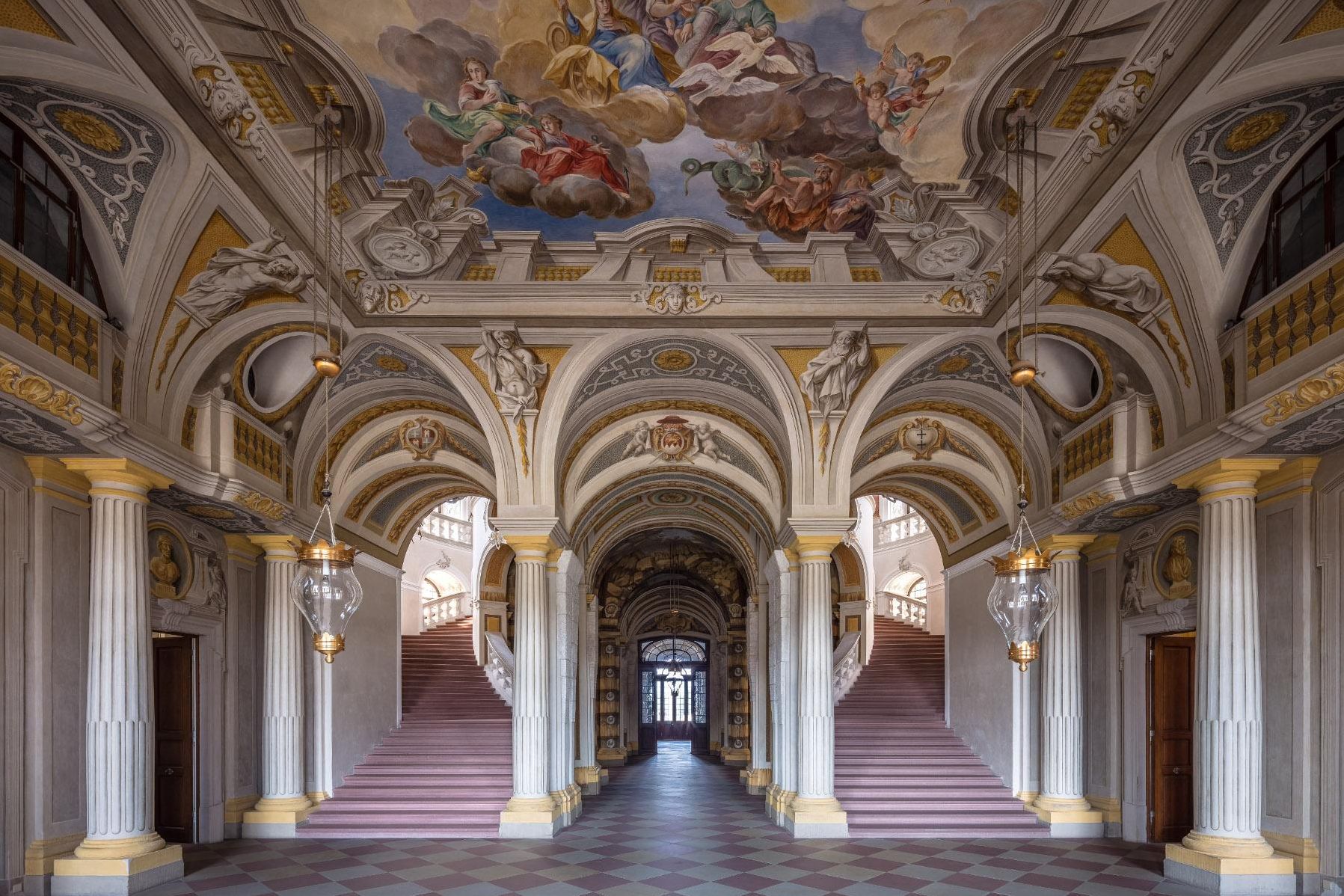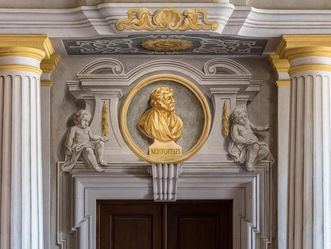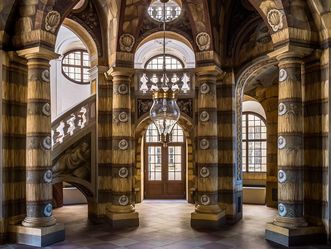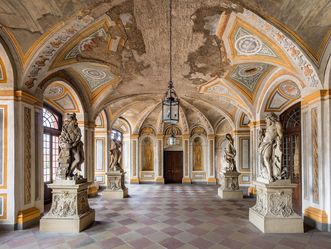A friendly reception
The entrance hall, or intrada, creates a lively first impression of the palace with its bright, illusionistic paintings. The ceiling fresco has a moral, Christian motif: the victory of the seven cardinal virtues over the sins. The gallery on the servants' floor can been seen above the side columns of the intrada. Damian Hugo von Schönborn had it built in 1726, deviating from the plans. The change required that the staircase be redesigned.






